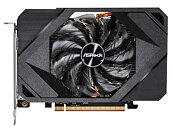People in the AMD subreddit are complaining because the card also has a small amount of memory (4GB) meaning it will have to make more calls to system memory than a card with more ram; therefore, the limit in pci express bandwidth will be felt more. They did provide an example of another AMD card (can't remember which) that suffers badly when the pci express bandwidth is limited
PCI-E traffic is almost only GPU commands from the processors, Assets exchange with the processors and Assets loading/swapping.
For any cards, PCI-E is just too slow on the latency side to be useful for rendering assets if the local memory is overwhelm. You have first to get via the latency of the bus, then latency of the destination (Memory latency if you access the main memory or SSD latency if you go thru storage). That might not be a big issue at very low fps, but it prevent by it's nature average to high FPS. We are hearing since AGP 1x that you can use the bus to access the main memory to expend the amount of ram the GPU have access but it was never been used this way. Well not for live rendering at least.
But it's being used to load or swap asset more easily.
Infinity Cache will not cache anything that it's not on the GPU memory since it's a L3 cache. So it will not be any help for the traffic that is going via the PCI-E bus.
In reality, this game will run at lower resolutions (Lower amount of memory needed for frame buffer), will probably not run game at max details unless very old, and the frame rate will be average.
I think 4 GB for that kind of card is enough and i think since it will be lower fps with lower details, the bus will probably get lower number of GPU commands. Previous test of Bus speed seems to demonstrate that the bus speed only matter at really high FPS. And we all know that if you go beyond the local GPU memory, you will stutter to the Bus latency.
This chip was designed to be a laptop chip running at low power on low-mid range gaming laptop paired with a IGP. The IGP would have all the video decoding function. In those situation while even more limited, the smaller bus would also mean less power usage.
But since every GPU produce is sold and the Geforce GTX 710 is still sold at 100+ US, AMD saw an opportunities to sell more GPU. The 4 GB buffer will keep it away from the miners as it's no longer enough to mine. So for low end gamer, it might not be such a bad deal in the end. But avoid that for a media box if possible. Better just get a good IGP instead for this purpose.
Will wait for benchmark and real price to see if it's a success or not. But i suspect it's going to be a great success .... for AMD finances.










